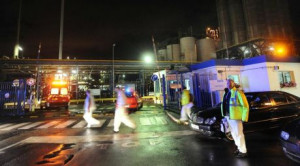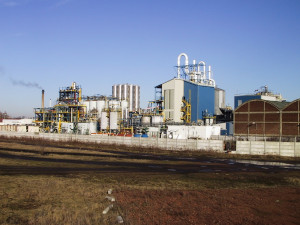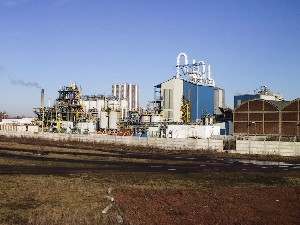At 10:46 pm during a thunderstorm, an electrical outage interrupted polystyrene (PS) production at a chemical site where 27 of the 160 employees were on the job. A safety disc broke and styrene was released.
The crystal manufactured polystyrene (CMP) workshop was continuously producing 2 types of PS: “crystal” (DC1/DC2 lines), and “shock” (DC3). The expandable polystyrene (EPS) shop was producing “expandable” PS non continuously in 6 asynchronous reactors: 2 at the start of the cycle, 2 in the intermediate stage, and 2 at the end of the reaction.
To minimise the effects of micro-outages (due to thunderstorms) on PS output quality, the operator typically switched shop power supply onto the 4 electric generating sets of the facility’s Peak Day Withdrawal (PDW) unit. This manoeuvre was performed at 10:20 pm, with 3 sets still available. At 10:43, the thunderstorm knocked out the 1st set. Since the 2 remaining sets were no longer sufficient, the unit entered into safety mode at 10:46, closing all utilities.
An employee tried to restart the PDW unit; the on-call electrical maintenance technician, the only member of staff certified to switch power supply onto the EDF grid, was called at 10:53 pm. The site’s alarm, sounded at 11:01 pm, a crisis team was assembled; on-call responders and external emergency services were notified.
By 11:05 pm, pressure on the 1st DC1 reactor had begun to rise. As per emergency procedures, gyro monitors started up at 11:15 to remove eventual vapours at the reactor 1 / DC2 line vent. In the process being used, unlike the other 2 lines, a pressure surge was capable of breaking the disc. The site was connected to the grid at 11:18 but the units were only allowed to resume operations a short time later. At 11:20, the disc on reactor 1 (DC2) burst at 5.8 bar, spraying a liquid mix containing 10 tonnes of PS and 3 tonnes of styrene.
At 11:40, a peripheral water curtain was activated to control vapour accumulation. Both EPS shop reactors, at the beginning of polymerisation, were emptied as a precaution into an emergency pit. At 12:25 am, styrene concentrations around the pit and in 4 neighbouring municipalities read zero. The alert was lifted at 2 am.
The efficiency of gyro monitors, plus the degree of polymerisation (smaller quantities of styrene) and confinement of aqueous discharge in a basin, served to limit operating losses; nonetheless, neighbours were exposed to foul odours. An emergency order was adopted; the units restarted on 19th July.
The runaway reactor was caused by the loss of utility service. The control room technician opened the vent too late, given all the actions required to put the 3 polystyrene lines into safe mode, in accordance with procedures.
The operator modified site practices in the event of a thunderstorm: electrical power would continue to be supplied by EDF (normal + backup) with independent positive safety features allowing utilities to run the key safety equipment required to control a runaway. The DC2 line emergency procedure was also modified by opening a vent valve and starting the gyro monitors upon activation of the shutdown procedure. Moreover, the cooling of this line was modified in order to limit disc breaks caused by a runaway reaction.
Download the detailed report in .pdf format (43 Kb)






